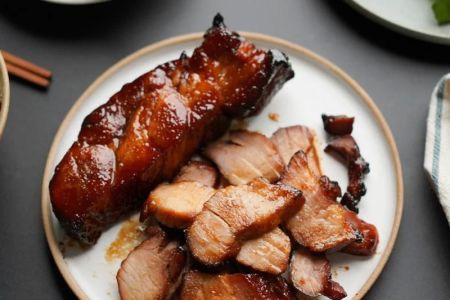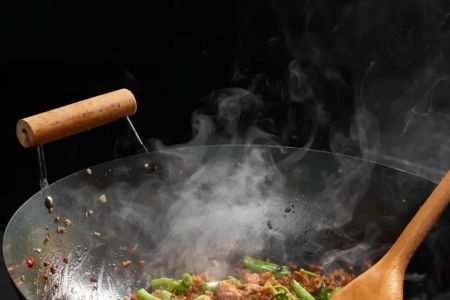How to Make Chinese Restaurant Chili Oil at Home
If you've ever had the chance to visit a Chinese restaurant, you’ve probably enjoyed the delicious, aromatic chili oil that accompanies many dishes. This flavorful condiment is a staple in Chinese cuisine, adding heat, depth, and a touch of smokiness to stir-fries, dumplings, and even noodles. I’ve always wanted to recreate this at home, and after several attempts, I’ve finally nailed down a recipe that’s both authentic and easy to make. In this article, I’ll share my step-by-step guide on how to make Chinese restaurant chili oil right in your own kitchen.
1. Why Make Chili Oil at Home?
The first time I tried homemade chili oil, I was shocked at how much more flavorful it was compared to store-bought versions. Making chili oil at home allows you to control the ingredients, ensuring a fresh, vibrant taste that’s hard to beat. Plus, when you make it yourself, you can adjust the level of spice and customize it to your personal preferences. Whether you like your chili oil extra spicy or more mellow, making it at home is the best way to get the perfect balance of flavors.
1.1 The Benefits of Homemade Chili Oil
One of the main advantages of making chili oil yourself is that you can use high-quality oils and fresh spices. This ensures the oil is both flavorful and healthier than many store-bought versions that may contain preservatives or artificial flavorings. Additionally, homemade chili oil has a unique depth of flavor that store-bought versions simply can't match.
2. Essential Ingredients for Chinese Restaurant Chili Oil
To make authentic chili oil, you don’t need a lot of ingredients, but each one plays a crucial role in achieving the perfect flavor. Here are the essentials that you’ll need:
2.1 Oil
The base of any chili oil is, of course, the oil. In Chinese cuisine, vegetable or peanut oil is often used because of its neutral flavor and high smoke point. I prefer using peanut oil as it adds a subtle richness that complements the other ingredients. However, feel free to experiment with oils like canola or grapeseed oil depending on your taste and availability.
2.2 Dried Chilies
Next up, we have dried chilies. For a traditional chili oil, you want to use dried red chilies, which will infuse the oil with both heat and color. I use a combination of Sichuan peppercorns and dried red chilies to add complexity and a numbing sensation (麻, or "má") that’s characteristic of Sichuan-style chili oils. If you prefer a milder chili oil, you can reduce the number of chilies used or opt for a gentler variety.
2.3 Garlic and Ginger
Garlic and ginger are optional but highly recommended for adding depth to the oil. I chop fresh garlic and ginger, allowing their natural flavors to infuse the oil. The combination of garlic and ginger with the chilies creates an aromatic base that is quintessential to Chinese chili oil.
2.4 Seasonings
To balance out the heat, you’ll need some seasonings. I use a pinch of salt, sugar, and sometimes a splash of soy sauce to enhance the umami flavor. Some recipes also call for a dash of vinegar to add a bit of acidity, but I prefer to keep it simple to let the oil shine.
3. How to Make Chinese Restaurant Chili Oil
Now that we have all the ingredients, let’s dive into the process of making chili oil. It’s surprisingly simple, and the result is well worth the effort. Here's the step-by-step guide:
3.1 Prepare the Chilies and Spices
Start by chopping your dried chilies and Sichuan peppercorns into smaller pieces. The smaller the pieces, the more flavorful the oil will be. I recommend using a pair of scissors to cut the chilies directly into your heatproof bowl. If you like a smoother texture, you can use a spice grinder or mortar and pestle to grind the chilies. Be sure to wear gloves when handling the dried chilies, as they can be quite potent!
3.2 Heat the Oil
Next, pour your oil into a saucepan and heat it over medium-high heat. You want to bring the oil to about 350°F (175°C). Keep a close eye on it, as the oil can burn quickly. While the oil is heating, add the garlic and ginger into the pan to infuse their flavors into the oil. Let them cook for a minute or two, but be careful not to let them burn. This step will ensure that the oil has that wonderful garlicky aroma.
3.3 Infuse the Oil
Once the oil is hot enough, carefully pour it over the chopped chilies and peppercorns in the bowl. The oil should sizzle and release a fragrant aroma. Let the oil sit for a few minutes to allow the flavors to meld. You can also add a pinch of salt, sugar, and any other seasonings you like at this point. Stir everything together and let it cool to room temperature.
4. Storing and Using Your Homemade Chili Oil
Once the chili oil has cooled, transfer it to a clean, airtight jar or bottle. It can be stored in your pantry for up to a month, though it’s best to use it within two weeks for the freshest taste. You can drizzle it over noodles, dumplings, stir-fries, or even use it as a dipping sauce for fried foods. The possibilities are endless!
4.1 How to Use Chili Oil
I've found that chili oil can elevate just about any dish. It adds a spicy, savory kick to simple dishes like fried rice or grilled meats. My personal favorite way to use it is in noodle soups, where it enhances the broth’s flavor and provides a satisfying heat. You can also drizzle it over salads or use it as a marinade for chicken or tofu. It's incredibly versatile, and once you try it, you'll want to add it to everything!
5. Tips for Perfecting Your Chili Oil
While the process is straightforward, here are a few tips I’ve picked up along the way to ensure you get the best chili oil possible:
5.1 Adjust the Heat
If you find the chili oil too spicy, you can dilute it with more oil or reduce the amount of dried chilies used in the recipe. On the other hand, if you love heat, feel free to add extra chili flakes or experiment with different types of chilies for a more intense flavor.
5.2 Experiment with Flavors
Chili oil is highly customizable, so feel free to experiment with other spices like cinnamon, star anise, or even dried mushrooms for a deeper umami flavor. You can also try using different oils, such as sesame oil, to impart a nuttier taste.
Conclusion
Making homemade Chinese chili oil is incredibly rewarding and allows you to add a personal touch to your favorite dishes. Once you get the hang of it, you’ll find it easy to whip up a batch whenever you want to elevate your meal. Whether you prefer a mild kick or an intense heat, this recipe is a must-try for any spice lover.






![Top Chinese Restaurants for Authentic Cantonese Cuisine in [Your City]](https://img.gochinarose.com/d33/2507/4157910400_450x300.webp)
